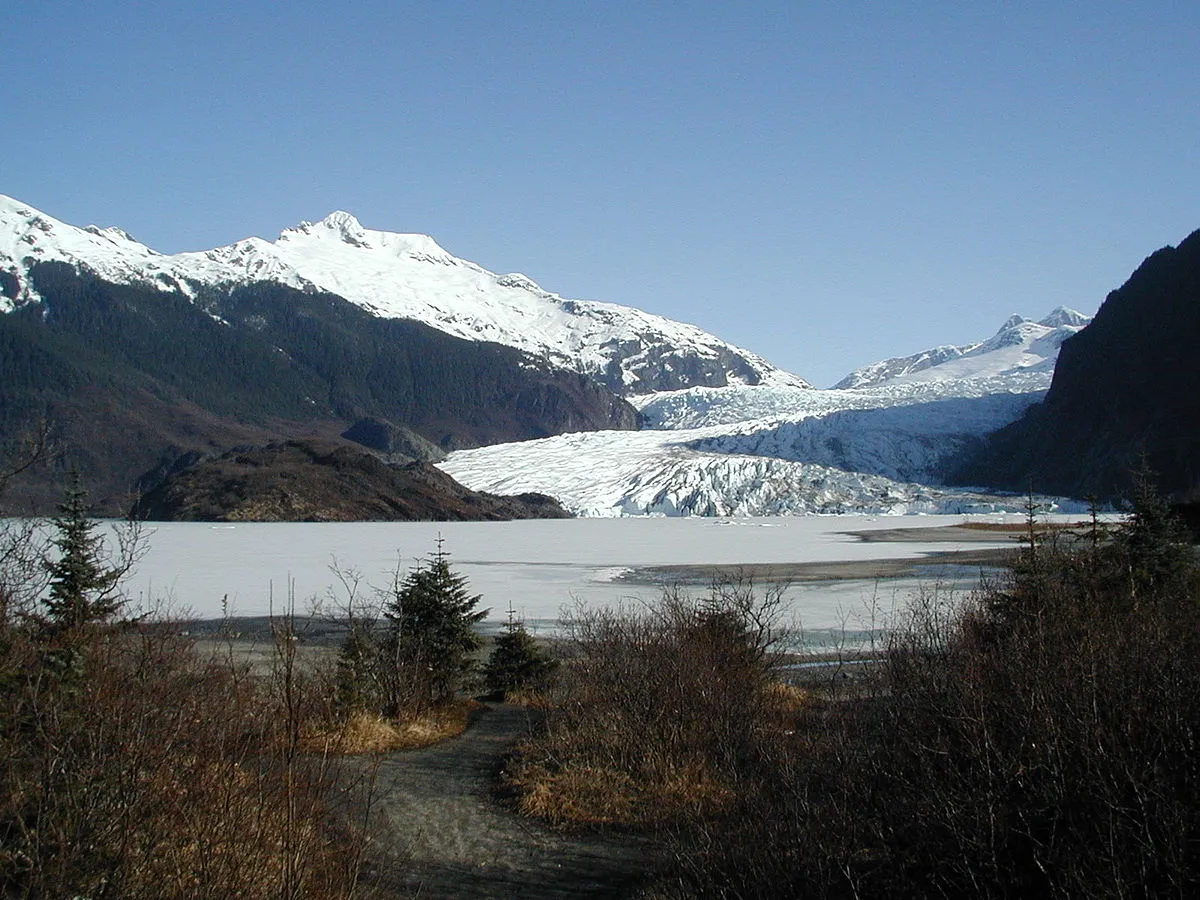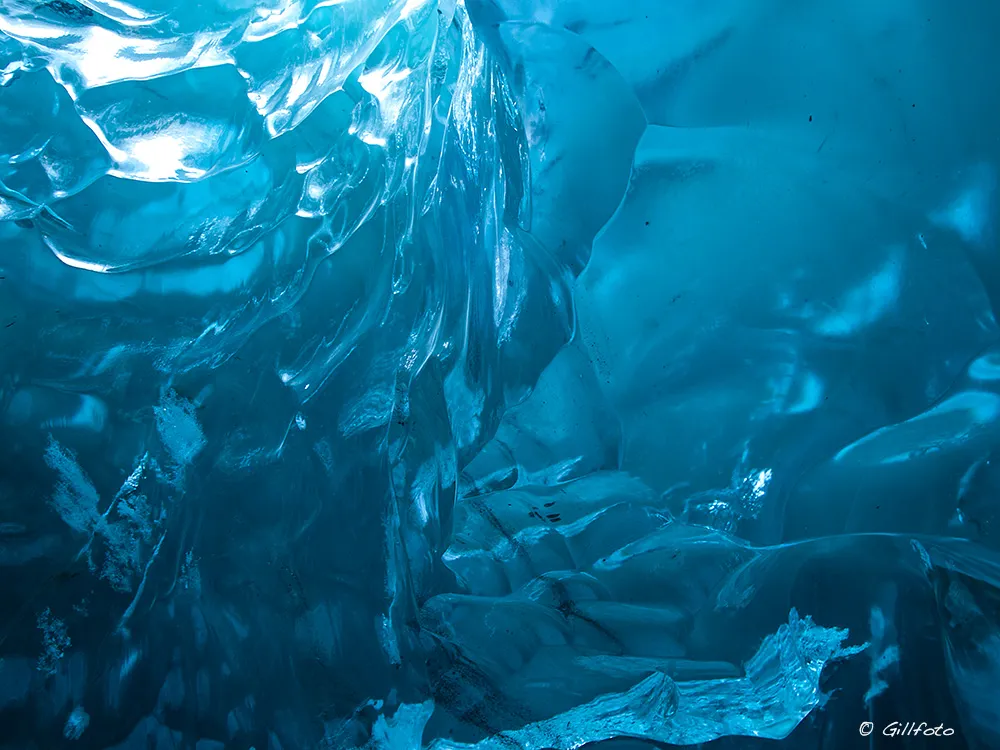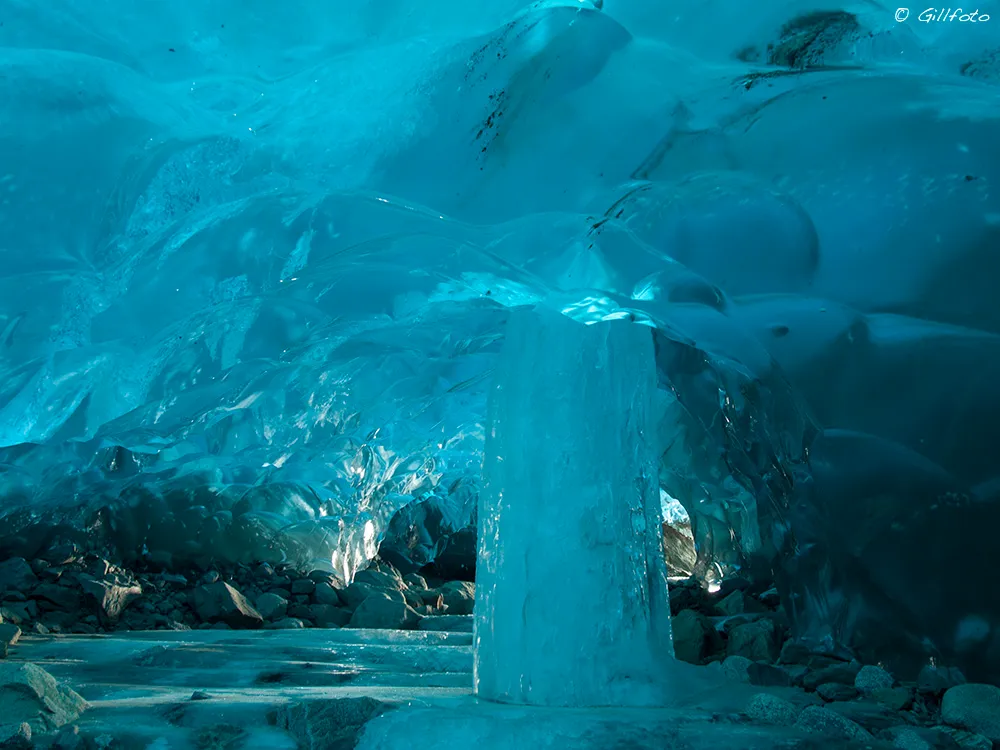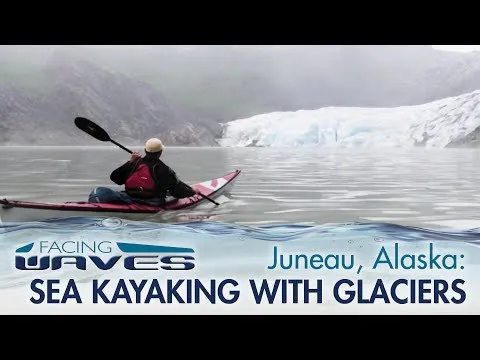Are you ready for a new weird phenomenon? Being summer here, I'm gonna take you some place cold to cool you down a bit. Pack your heavy clothes and follow me to... Alaska!

Image from: commons.wikimedia.org - Courtesy of: Gillfoto - License: CC BY-SA 3.0
- What are we doing there?
- You'll see! Zip your heavy jacket up, put your gloves and boots on and let's go!
... ... ... ...
- Phew! You didn't tell me I'd have to do ice climbing after getting off that kayak. Are we there yet?
- Had I told you, you might have said no... Be patient, we're almost there! Watch your step! Ice gets all slippery here.
- Ok, ok I got it. Now how much farther is it?
- We're almost there, now duck and crawl through that hole.
- What? No! Can't you see the water running down? This place is dangerous, we could be buried under the ice any moment.
- Don't be a coward! Trust me and get down there.
- In case I die, all my steem will go to @trumpman, not you; just so you know!
- You're not going to die. Stop whining and follow me, things are not always as they seem.
- WOW!

Image from: commons.wikimedia.org - Courtesy of: Gillfoto - License: CC BY-SA 3.0
- What is this place?
- These are the miraculous...
Mendenhall Ice Caves
Incredible ice formations of the Mendenhall Glacier! The glacier that formed 3,000 years ago (during the Little Ice Age), originates from the Juneau Icefield (a frozen area of 1500 square miles), measures a length of almost 22 km and is situated near the town of Juneau (Southeast Alaska). The glacier along with the surrounding area are parts of the Tongass National Forest and are supervised and monitored by the Juneau Icefield Research Program since 1942. The glacier came by the names: Sitaantaago (the glacier behind the town) or Aak’wtaaksit (the glacier behind the little lake). In late 19th century, naturalist John Muir named it Auke (Auk) glacier and its present name was given in 1891 in honor of Thomas Corwin Mendenhall. [1, 2, 3]
Where did the ice come from?
The area favors glacial formation. A combination of terrain morphology and climate lead to glaciation. How? It's simple: Moist air from the sea that meets the mountains on its way starts moving upwards, freezes over and precipitates as rain and snow (the area sees almost 30 meters of snow every year). And here comes the climate factor, summers in Southeast Alaska are mild, meaning that snow in high altitudes cannot melt entirely. Over the years, snow builds up in layers which slowly turn into thick, solid ice. The ice then gets pulled downslope as it becomes heavier and heavier and creates vast, icy fields. Those solid ice fields are covered with brittle ice that keeps shifting shapes. You can see crevasses that pop up (sometimes many meters deep) and disappear as they merge together. This scenery will be changing over time in a very dynamic process. At the end of this "journey" from the top to the bottom, the ice reaches Mendenhall Lake after 2-2.5 centuries. [1, 2, 6]

Image from: commons.wikimedia.org - Courtesy of: Gillfoto - License: CC BY-SA 3.0
Slowly melting down...
Apparently climate change would not leave these chunks of ice unaffected no matter how big they are. The glacier has been diminishing since the 16th century (it has retreated by 4 km since 1500). With the planet's temperatures rising and snowfall declining, it is very probable for the glaciers to finally disappear in the centuries to come. [1, 2, 3, 4, 5, 6]
Melting and creating
Melting ice may be worrying, but it has resulted in the formation of Mendenhall Lake in 1929, which is now home to various species of fish. Moreover, as the ice keeps melting, it leaves behind incredible caves waiting for visitors to explore. The water streams "eat up" the ice, creating passages that over time get bigger and bigger allowing for people to walk through. Last but not least, the melting reveals an old forest, formerly hidden inside the ice. [1, 2, 3]
Hypnotizing blue colors
The ice caves can be reached after some kayaking on the lake, a land vehicle or helicopter ride, some hiking and ice climbing. The entrance might be a little scary, as narrow passages made of dripping ice lead to the magical world of all shades of spectacular blue. The caves get their color because of the ice that reflects blue wavelengths and absorbs all other colors. In some parts the ice might appear white because of the air pockets trapped in the ice chunks, which scatters white color. [2, 3]
A secret forest
As the glacier retreats it unveils secrets of the past. In 2012 an ancient forest was revealed. Safely protected by a layer of gravel, tree barks were preserved underneath the tons of ice and reached the light of the day to offer scientists the opportunity to gather more data on the history of the area before the glaciation. With the oldest trees being somewhere around 2,350 years old, these findings are a great bank of information. [1, 7]
Visit while you still can
The area is open for visitors and you can find many organised activities if you are the nature-loving type of guy. The Mendenhall Visitor Center is there to give you all the information you need to explore this amazing place. You can always go on one of the organised tours to the ice caves or kayaking on the lake among the floating icebergs and the Nugget Falls .

Image from the Public Domain through: commons.wikimedia.org - Courtesy of: Freekee
I suggest you go through the 5th and 6th link in the references (atlasobscura.com & beyondak.com) to see some fantastic photos of an ice cave tour.
References
[1] wikipedia.org
[2] fs.usda.gov
[3] curiosity.com
[4] wanderingtrader.com
[5] atlasobscura.com
[6] beyondak.com
[7] livescience.com

PS: As you may have heard, my country has been dealing with severe forest fires these days. With homes and lives lost, when such disasters happen there is nothing left to say. You can only run to help however you can.
For the Greek people out there, here is a link I found from friends' shares on my Facebook feed, in case you're interested in helping out:
Πώς Μπορείς να Βοηθήσεις για την Τραγωδία στην Αττική

Thank you so much for your time!
Until my next post,
Steem on and keep smiling, people!


